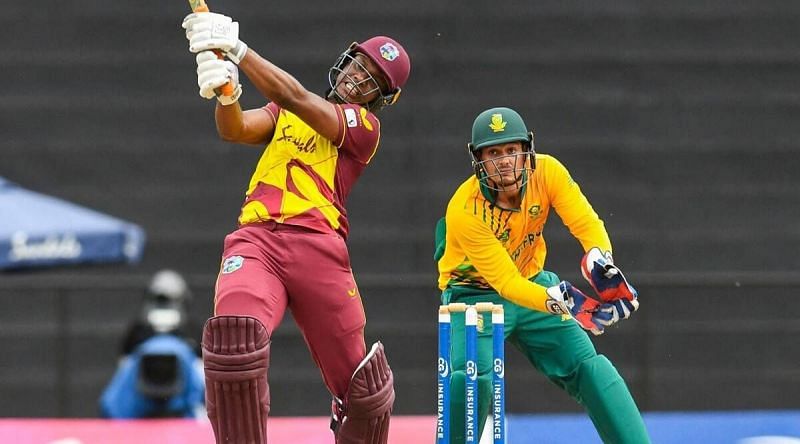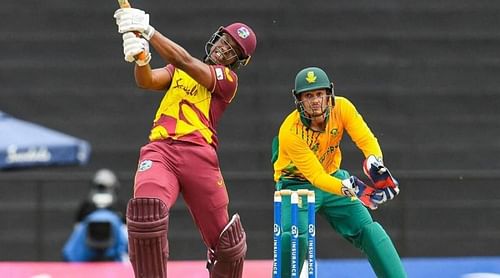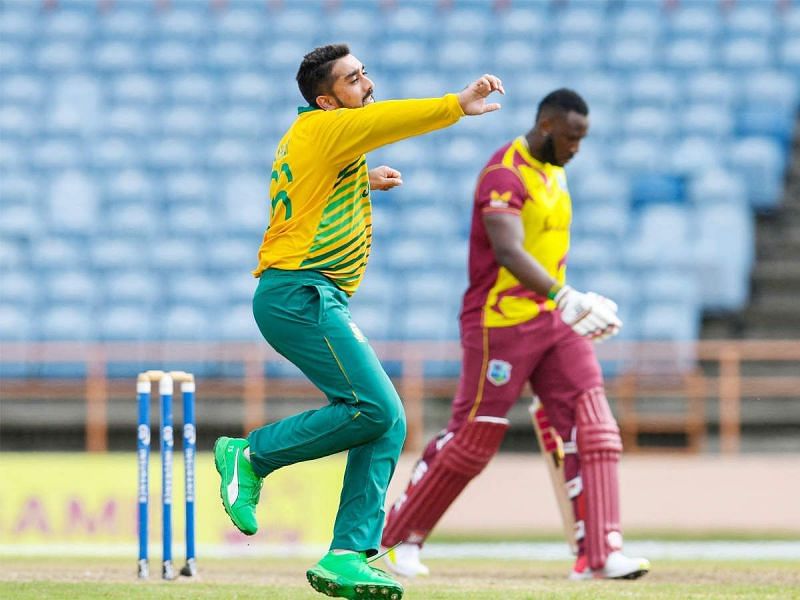
Three reasons behind West Indies’ series defeat to South Africa

West Indies lost yet another T20I series defeat on Saturday. This time, it was against a visiting South African side. After winning the first T20I, they lost the next two on the bounce. Though the Men in Maroon did well to come out victorious in a must-win fourth encounter, they once again went down to the visitors in the final match to concede the series 3-2.
With the return of players like Chris Gayle, Andre Russell, Dwayne Bravo and Fidel Edwards, many pundits had opined that this was probably the strongest side to don the maroon jersey in recent years. Things seemed to be going down the predicted route when the Caribbean side won the first match by 8 wickets with five overs to spare. However, it all started going downhill from there.
Yes, West Indies have always displayed indifferent form when it comes to bilateral T20I series. The two-time world champions have won only 18 of the 49 T20I series they have been part of. While they have a win-loss ratio of 58% in ICC tournaments, they have won only 40% of their matches in bilateral series.
The last five years since the ICC World T20 2016 have been even worse for the Kieron Pollard-led side. They have won just 20 out of 58 bilateral T20Is. Moreover, the same set of mistakes that are proving to be costly for the West Indies.
Let's take this opportunity to look at the three main reasons why West Indies went down to South Africa in a closely-fought.
Three weaknesses in the West Indies team that got exposed against South Africa

1. Continued struggle against spinners
The weakness of the West Indies batsmen against spin, especially wrist spin, is no secret. They have struggled against the turning ball over recent years and this series has been no different. Skipper Kieron Pollard had hinted before the series that the team is working on improving this aspect of the game, but their efforts were not visible.
Tabraiz Shamsi and George Linde tied up the formidable batting unit of the West Indies with their spin. Shamsi ended the series with an astonishing economy rate of 4 runs per over, with 7 scalps to go with it. His partner in crime, Linde, took 6 wickets and went for under 8 runs per over. Shamsi and Linde were each presented a player-of-the-match award each for their performance. The left-arm wrist-spinner was also adjudicated as the player of the series.
Their their fellow pace bowlers struggled in contrast. Both Kagiso Rabada and Lungi Ngidi ended up conceding over 9 runs per over throughout the series. Anrich Nortje was the only saving grace for the South African pace bowlers, going for just 7 runs an over and picking up 4 wickets.
2. Lack of clarity about innings progression
In the initial part of the series, West Indies seemed to have a clear-cut strategy about pacing the innings. They seemed hell-bent on going at the top gear regardless of the match situation. The strategy seemed to work in the first T20I when they chased down 161 runs with five overs to spare. However, things did not work out as anticipated in the second T20I. They lost the complete middle-order by going for ambitious shots and were reduced to 95/5 by the end of 15 overs.
Skipper Kieron Pollard hinted that the inability to turn the strike over might have prompted the team to adopt this approach. But once it misfired in the second T20I, it might have prompted the management to go back to the drawing board. What we've seen in the remainder of the series is a more conservative approach from the West Indies middle-order.
However, the ineffective rotation of strike combined with their difficulty against the spinners meant that the overs 7 to 15 were the least productive stage for the home side throughout the series. They scored at an average of 61 runs over those 10 overs, losing over three wickets. The paltry scoring rate nullified the brisk pace of over 10 runs per over that the West Indies maintained during the powerplay and death overs.
3. Poor form of the middle-order batsmen
The current West Indies batting unit is one of the most formidable on paper. A line-up consisting of Nicholas Pooran, Shimron Hetmyer, Kieron Pollard and Andre Russell in the middle-order is certainly capable of giving sleepless nights to any team. But the potential strength of this line-up could not materialize into power-packed performances during the series.
The four batsmen aggregated just 256 runs across the series at an average of just over 18 and a strike rate of 123. The only innings of note among them came from the bat of skipper Kieron Pollard when he played a match-winning knock of 51* from just 25 balls in the fourth T20I.
The biggest worry in the West Indies camp would be regarding the poor run of vice-captain Nicholas Pooran. After a disastrous IPL earlier in the year, where he scored just 28 runs in 7 innings, the series against South Africa was to be the stage for his return to form. But things did not work out at all.
With another 10 T20I matches to be played during the countdown to the T20 World Cup in the Middle-East, West Indies will hope to work on these areas before they embark on a quest to defend their trophy.